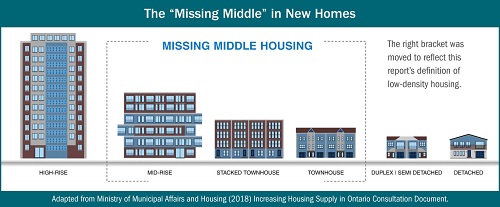 Tuesday, May 7, 2024
Tuesday, May 7, 2024  Tuesday, May 7, 2024
Tuesday, May 7, 2024 
Got news? Next submission deadline is Friday at 5:00 p.m.
Click here to submit YOUR news

VAUGHAN, ON, Dec. 11, 2018 /CNW/ – The Greater Toronto and Hamilton Area (GTHA) is at risk of missing provincial population targets, according to a report released today. This would potentially result in 7,200 fewer new homes being built each year until 2041, which creates context for the recent introduction of the Local Planning Appeal Tribunal (LPAT).
“The GTHA’s Unbalanced Housing Stock: Benchmarking Ontario’s New LPAT System” says that up to 165,600 homes are at risk of not being built over the next 23 years. That’s equal to an annual loss of $1.95 billion in GDP from residential construction activity if various constraints continue to inhibit the goals set by the provincial growth plan, Places to Grow.
Paul Smetanin – president of socio-economic research and data firm the Canadian Centre for Economic Analysis (CANCEA) – says an important factor that will prevent the region from hitting provincial home-building targets is the lack of medium-density housing starts, or the Missing Middle (see graphic).
“Hamilton has made the most progress on the ‘Missing Middle,'” Smetanin says. “Toronto, Mississauga, Markham, Newmarket less so, while Brampton is biased towards lower density starts.”
There are a range of issues among the region’s most populous municipalities, including:
Andy Manahan, executive director of the Residential and Civil Construction Alliance of Ontario, said: “We commissioned the report because we wanted to find out what the possible impacts of LPAT will be on delivering housing. We will work with provincial and municipal government officials to help ensure that the transition to the new LPAT system is as seamless as possible and does not create negative consequences for the housing supply in the province.”
To read the report, click on this link.
WHAT IS RCCAO?
This labour-management construction alliance has advocated for infrastructure investment for 13 years, commissioning 48 independent, solutions-based reports and 10 videos to help inform decision-makers.
Watch the video and learn more about the benefits of joining Construction Links Network – the peer-to-peer network sharing platform for the construction, building and design community.
Ideal for YOUR Press Releases | Project Updates | New Appointments | Awards & Milestones | Company News | New Products/Services | Brochures | Videos | Infographs | Blog Sharing | Events and More